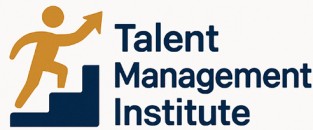
Understanding the Concept of Employee of the Quarter
Unpacking the Essence of Employee of the Quarter
The concept of recognizing an Employee of the Quarter is a long-standing tradition in many organizations, aiming to reinforce positive behaviors and celebrate success. This initiative offers more than just a title; it’s an integral component of a broader recognition program designed to honor exceptional performance and inspire excellence within the team. Organizations, whether operating from a single office or across multiple locations, tailor their recognition programs to reflect their unique values and mission, making it crucial to understand the underlying principles of such programs.- Purpose of Employee of the Quarter Programs: At its core, the employee of the quarter award acknowledges individuals who go above and beyond their defined roles, making impactful contributions that resonate across the company. This initiative not only highlights individual excellence but also fosters a culture of appreciation and motivation, encouraging all employees to strive for their best.
- Broader Context of Employee Recognition: While the Employee of the Month or Quarter may be a standout feature, it forms part of a larger recognition framework. Such frameworks often include peer recognition systems, nomination processes, and sometimes, tangible rewards like appreciation gifts, thereby creating a comprehensive approach to employee motivation and morale.
- Significance of the Recognition: Recognizing an employee each quarter does more than honor one person. It sets a standard and encourages a shared vision of success and effort across teams. This can lead to improved engagement, productivity, and a positive work environment, reflecting the organization’s commitment to its employees.
Criteria for Selecting the Employee of the Quarter
Key Criteria and Best Practices for Selection
Selecting the right employee for the "Employee of the Quarter" award is pivotal to the success of the recognition program. It's not just about the accolade; it reflects a dedication to excellence and acknowledges outstanding performance within the team. Various criteria should be carefully laid out to ensure a fair and transparent selection process, making it essential for both employees and leadership to understand the benchmarks. To begin, set specific performance metrics. These might include measurable achievements, contributions to team success, or consistent demonstration of company values. By establishing clear criteria, not only does the process become more transparent, but employees can also aspire to meet these standards, fostering motivation and commitment to the organization's goals. In addition to performance metrics, peer recognition plays an important role. Encourage other team members to participate in the nomination process by providing detailed feedback through a nomination form. This can highlight specific instances where a peer has gone above and beyond, offering a comprehensive view of an employee's contributions. Furthermore, consider setting a rotation system across multiple locations or departments. This ensures that every part of the organization gets a fair representation and opportunity for selection, preventing any single group from monopolizing the spotlight. Lastly, transparency in communication is vital. Share the criteria and selection process openly with all employees. Clear communication on what "Employee of the Quarter" entails will enhance trust in the program, reinforcing its credibility and authority as an award for true excellence. Learn more about tools for fostering enthusiasm and engagement through https://www.talent-management-institute.com/blog/engaging-thanksgiving-activities-for-team-building, where you can explore effective strategies for creating a rewarding and motivating workplace environment.Impact on Employee Motivation and Morale
The Role of Motivation and Morale in Employee Recognition
Recognizing the employee of the quarter can significantly boost motivation and morale across the organization. Implementing an appreciation program where employees receive acknowledgment through a nomination process highlights the value of their contributions, instilling a sense of pride and accomplishment. Such a recognition strategy not только улучшает самочувствие сотрудников, но и укреп», team cohesion and fosters a workplace culture focused on excellence.
When team members are aware of a clear quarter nomination process that transparently determines who receives the award, it sets a motivational benchmark. Employees strive to achieve their best, improving both individual and collective work performance. Moreover, knowing that their peers and leadership value their efforts can significantly enhance job satisfaction and encourage employees to maintain high standards consistently.
Awarding an employee quarter title is more than just offering a symbolic gift such as an office plaque or a certificate of appreciation. It is about sincere acknowledgment and the power of positive reinforcement. These gestures demonstrate that the management appreciates specific achievements and respects the employee's role within the team.
In addition to tangible awards, long-term impacts surface when organizations go beyond transactional recognition to incorporate peer nomination and regular appreciation within their quarter program. Integrating peer recognition fosters a collaborative environment where employees support each other's success. For example, recognizing one employee's outstanding performance becomes a learning opportunity for the entire group, promoting ongoing development and shared values.
Establishing a robust employee recognition framework is integral to sustaining a motivated workforce. Check out this insightful guide on exploring strengths and weaknesses to further enhance individual growth and, by extension, team success.
Implementing a Fair Selection Process
Fostering Transparency in the Selection Process
When it comes to celebrating excellence through the Employee of the Quarter award, a fair and transparent selection process is crucial. It not only ensures that recognition is deserved but also upholds the integrity of the recognition program itself. Having a clear framework helps build trust among team members and enhances leadership credibility. To achieve this fairness, specific steps can be integrated into your existing quarter program.- Establish Clear Criteria: Determine the specific performance indicators and behaviors that align with organizational goals and excellence. These can be outlined in a structured nomination template so that everyone is aware of what it takes to be considered for the award.
- Cross-Peer Involvement: Enable peer recognition by allowing team members to participate in the nomination process. This not only diversifies perspectives but also fosters a collaborative environment where employees can appreciate each other's contributions.
- Diverse Review Panel: Assemble a committee that represents multiple levels and locations within the organization. This ensures that various viewpoints are considered, resulting in a balanced and unbiased decision-making process.
- Regular Feedback Loops: Encourage feedback from employees on the process itself. Engaging them in discussions about how the nomination process could be improved ensures sustained credibility and effectiveness.













